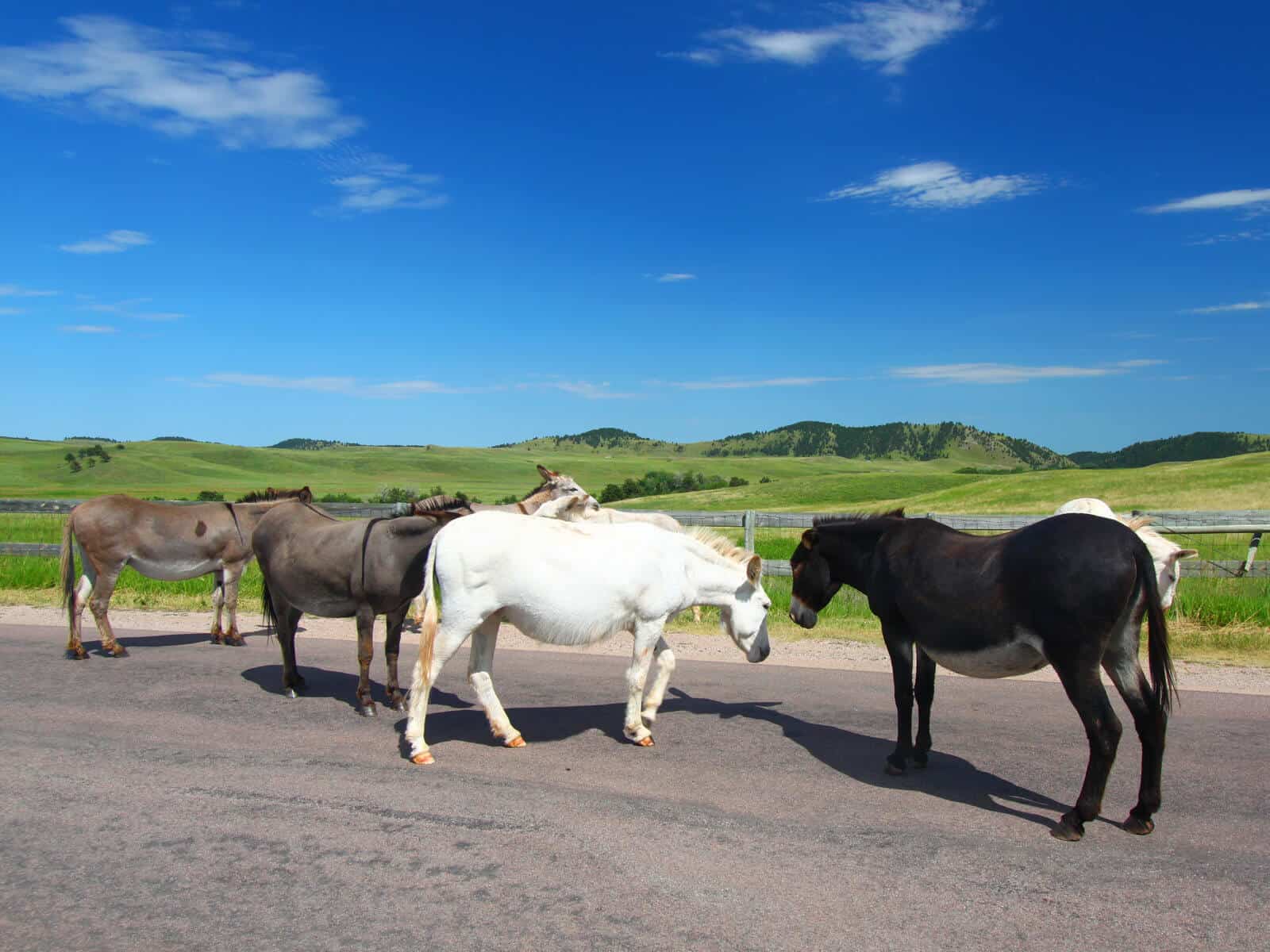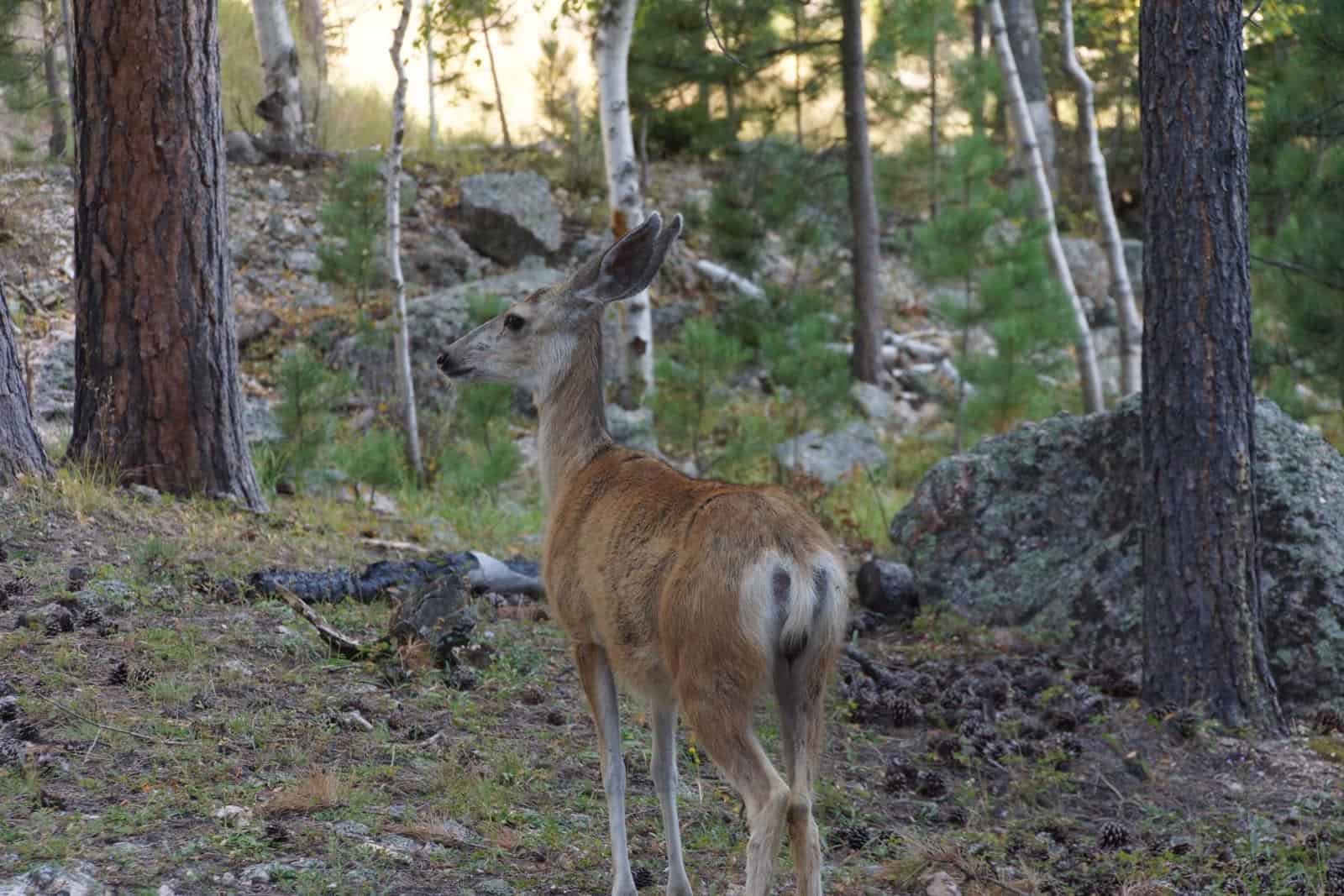I’m going to be honest and one of the highlights of our South Dakota road trip was driving the Custer State Park Wildlife Loop Road. Which is surprising as it wasn’t the reason we had come to the area in the first place. In this guide we will tell you our top tips for driving the Custer State Park Wildlife Loop road and some of the highlights and wildlife that you can expect to see along the way.
What is the Custer State Park Loop Road?
The Custer State Park Wildlife Loop is an 18 miles loop road that runs through the impressive Custer State park. Given the proliferation of national parks in the area, a local State park can be easily overlooked. However it really shouldn’t be.
And while there are nearby roads that are also amazing, such as the Peter Norbeck Scenic Byway and the Needles Highway, the Custer wildlife loop is definitely my favourite.
The loop road is in the Southern part of the park and the wildlife spotting is almost guaranteed. But what are the best ways to drive this amazing road.
Important Note: This post may contain affiliate links which means if you click through and make a purchase I will make a small commission at no extra cost to you
Driving the Custer State Park Wildlife Loop Tips

Driving the Custer State park Wildlife Loop Road (Tips)
So now you know why you should drive the wildlife loop road we will give you our tips for driving it.
Come early or late
Whenever I visit National Parks, I always recommend getting there very early or for sundown. The reason for this is usually because it is the best way of avoiding the crowds at particular beauty and hot spots.
However at Custer State park there is another reason – the wildlife. It is a well known fact that animals are very active first thing in the morning and at dusk. And one of the main reasons for driving this road is to view the wildlife so you will want to be here at these best wildlife viewing times.
So when you are putting together your Custer State park itinerary be sure that you have driving this loop road at the start or end of the day.
Stop at the Custer State Park Wildlife Station Visitor Centre
Whenever we visit State or National Parks our first port of call is always at the Rangers Station / Visitor Center. And Custer State park is no exception. We recommend making the Custer State park wildlife Station an early port of call when you get into Custer.
In this station they have an up to date map of where the large bison herds are so you can head out to find them. And in my opinion from our experience in all the renowned parks, the bison at Custer can rival those at both the Badlands National Park and Yellowstone NP!
Get off the beaten path

Driving the Custer State Park Wildlife Loop Road
Now while the wildlife loop road is 18 miles, there are however overshoot dirt roads along the way! I would certainly recommend taking these. I find that you can escape the crowds and are more likely to see something rare here.
Get Out and See Things on Foot

One of the things that I enjoyed about the wildlife loop was that there were plenty of places to get out of the car for a walk or to check out aa view point. But there are a coupe of nice and not too difficult hikes that can be undertaken too.
For instance there is the Centennial Trail ad the Prairies Trail which is a 3 mile loop hike that is achievable for most.
Stay Safe
Although it can be tempting to get up close to the wildlife please don’t. There are wildlife viewing rules and safety precautions posted around the park and you should follow them. Although they may get close to the cars and people, it should be remembered that these are wild animals and that can be dangerous.
Self Drive versus a Custer State Park Safari
One of the things many people don’t realise about Custer State park is that you don’t have to drive the loop road yourself. In fact there is a Custer State park safari that you can take instead.
These organised safaris are a great way to get off the beaten path and get closer to wildlife as these tours can go on roads that are nor accessible by normal cars. The drivers also have a better knowledge of where to find the best wildlife.
You can book your Custer State Park safari here
FAQs about driving in Custer
How long does it take to drive the wildlife loop custer state park?

Driving the Custer State Park Wildlife Loop (Tips and AdvicE)
Probably the most frequent question we get asked about Custer is “how long does it take to drive the wildlife loop Custer state park?”. And the truth is no one can really say as there are so many factors that is depends on:
- time of year and crowds on the road,
- how many and how long you plan to spend at beauty spots and at wildlife encounters
- time of day and
- whether there are any bison or burro to cause traffic jams on the loop.
And it definitely isn’t something that I think that you should rush. Now probably if you were just to drive the loop without stopping, getting off to view things and providing there were no traffic jams, you could probably do it in an hour. However to really appreciate and experience this road we recommend allocating at least 3 hours to driving the loop road in Custer.
What animals can you see on the Custer State Park Wildlife Loop?

We saw so many animals while we were driving the Custer State Park Wildlife Loop Road. More than we did in the Badlands and Yellowstone combined.
You can see all of the following regularly in the park:
- bighorn sheep
- prairie dogs
- deer
- burros
- bison
- pronghorn antelope
- coyotes
- birds of prey and even
- black bears.
On your trip we saw plenty of bison, lots of prairie dogs, some deer and of course the famous and very tame burros (donkeys to the rest of us).
Can you stay in Custer State Park?
Yes it is possible to actually stay in Custer State Park and this can definitely be an advantage when you are trying to get on the road early and late in the evening to see the wildlife. In fact there are 9 campgrounds and 4 lodges within the park.
When we visited we were doing a large South Dakota / Black Hills / Mount Rushmore trip so we decided to stay in Rapid City as it was the most convenient place for all the attractions. If you decide to do this and not stay in Custer you will just need to make sure that you get up and have an early start.
Further South Dakota Reading


